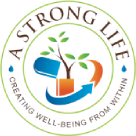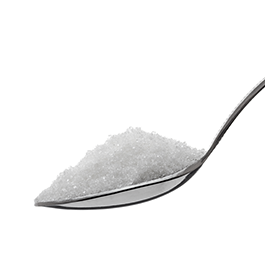So, you read it on the internet, so it must be true… Right?
I don’t claim to be a medical or chemical compound expert, so I’ll do my best to simplify what I’ve found, and present the facts (both good & bad). Just because something has a chemical sounding name, does that mean it’s automatically bad for you? Absolutely… That is; if you’re foolish enough to believe everything you read! For example, “Dihydrogen Monoxide (DHMO)”, sounds scary doesn’t it? Well, Google it… The top result should yield the DHMO.org facts page, which is the Dihydrogen Monoxide Research Division. This site, along with a slew of others; regarding DHMO have been around for years, and they are ALL PRANKS! However, if you’re one of those people who read the first few links that pop up on a search engine, and don’t do the due diligence of researching the facts, then you’re just a guilty as the people who perpetuate the myths & lies. “Stupid is as stupid does” Forrest Gump.
Dihydrogen Monoxide is just the chemical name for water! Think about it. “Dihydrogen” indicates two hydrogen atoms, or “H2.” “Monoxide” refers to a single oxygen atom, or “O.” Put them together, and you get H2O. Not so scary now, is it?
Let’s look at two other scary chemicals: Sodium & Chlorine
- Sodium is a metal that explodes on contact with water.
- Chlorine is a poisonous yellow gas that was used as a weapon in World War I.
- But when combined they make Sodium Chloride = Table Salt.
So what is Sucralose (also known as Splenda®)? It’s 1,6-dichloro-1,6-dideoxy-beta-D-fructofuranosyl-4-chloro-4-deoxy-alpha-D-galatopyranoside or (C12H19Cl3O8). Not a rocket scientist? Simply put, it’s made by adding three chlorine (bleach) ions to one sugar molecule. The end result is a “safe” & “approved” product.
More than 110 safety studies, (in humans & animals) representing over 20 years of research, have shown sucralose to be safe. Scientists have conducted many studies on sucralose to determine whether it had any effects on a number of different health conditions, including growth and development, risk of cancer, chemical effects on the body (or toxicology), developmental abnormalities such as birth defects, and effects on the nervous system.
Experts from a wide range of scientific backgrounds have reviewed these studies and concluded that there are no harmful effects from consuming sucralose, even in people consuming the highest amounts. Currently sucralose is approved in over 80 countries, and each has done their own review & research regarding this product.
Examples of government and scientific groups that have reviewed sucralose’s safety include:
- European Union Scientific Committee on Food (SCF)
- U.S. Food and Drug Administration (FDA)
- Food Standards Australia/New Zealand (FSANZ)
- Health Protection Branch of Health and Welfare Canada
- (Food and Agriculture Organization/World Health Organization) Joint Expert Committee on Food Additives (JECFA)
- Japan’s Ministry of Health and Welfare
Even the National Cancer Institute website states that, “The studies showed no evidence that sucralose causes cancer or poses any other threat to human health.”
However, the nonprofit food safety & nutrition watchdog group; Center for Science in the Public Interest (CSPI) has downgraded sucralose. In 2013 the group downgraded it from “Safe” to “Caution” based on the then-unpublished findings, done by Dr. Morando Soffritti, the Director of Ramazzini Institute in Bologna, Italy. On February 8, 2016 the CSPI downgraded it for a second time from “Caution” to “Avoid” after the finding were finally published on January 29, 2016. In the study, Dr Soffritti’s group fed various doses of sucralose to 853 mice, from when they were born until they died. Post-mortem examinations revealed that in male mice, the more sucralose they consumed, the more likely they were to develop leukemia.
In 2013, when the Institute released their findings, the US FDA along with the other world agencies mentioned above, asked Ramazzini to provide more data on the study, and crucially, the histopathological slides so the accuracy of its diagnoses could be confirmed. The institute was evasive, releasing only a portion of the data, and then refused to release the slides. The FDA was forced to conclude that: “Based on the available data, we have identified significant shortcomings in the design, conduct, reporting, and interpretation of this study. The FDA finds that the reliability and interpretation of the study outcome is compromised by these shortcomings and uncontrolled variables, such as the presence of infection in the test animals.”
Again, these finding are currently being scrutinized by all of the world agencies. The Ramazzini Institute is something of a joke in European and American science, because they have a poor past tract record for quality control. Why would this ONE study show different results then the previous 110 studies that have been done over the past 20 years? One would think that a research institute would be so embarrassed by the world criticism that it would release all its data in order to defend its findings, but you would be wrong! The pattern was to tell the world media about the cancer warning first, inflame public opinion, and then stonewall the agencies on the data later on. Plus these finding were never published in any leading “Peer-Reviewed” cancer, scientific or medical journal… Instead the findings that were published on January 29, 2016 were done so in the International Journal of Occupational and Environmental Health.
So, even though CSPI has downgraded sucralose on unsubstantiated data, the rest of the World Government Agencies are maintaining that Sucralose is safe, until documented proof and data can be examined thoroughly. Remember, that any chemical, even water & oxygen, can be toxic & poisonous if the dosage is high enough and circumstances are just right.
In conclusion, everyone is free to avoid whichever ingredient they wish to, but do not misinform others or perpetuate the myths & lies. Get the FACTS!
WOULD YOU LIKE TO LIVE A STRONG LIFE?
Join my email list for articles, health and fitness tips, exclusive announcements on new things we’re working on and product recommendations straight to your inbox! You can unsubscribe at any time.
We value your privacy and will never share your personal information.

